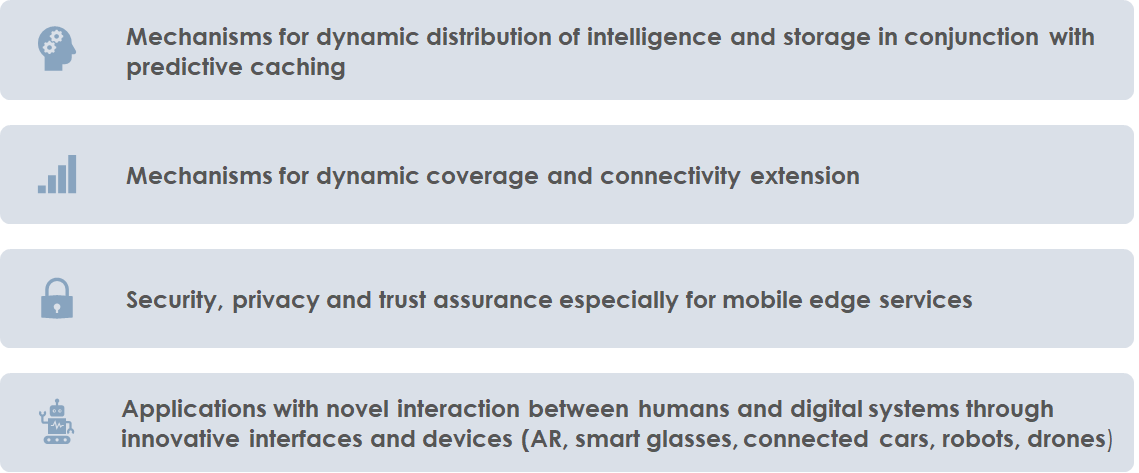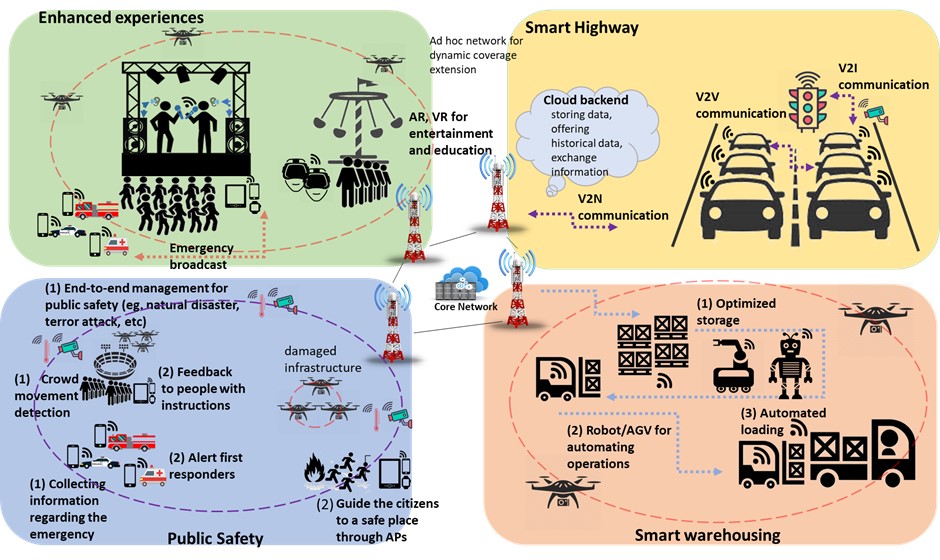You have not selected a slider


Vision
In future 6G wireless networks, it is imperative to support more dynamic resourcing and connectivity to improve adaptability, performance, and trustworthiness in the presence of emerging human-centric services with heterogeneous computation needs. DEDICAT 6G aims to develop a smart connectivity platform using artificial intelligence and blockchain techniques that will enable 6G networks to combine the existing communication infrastructure with novel distribution of intelligence (data, computation, and storage) at the edge to allow not only flexible, but also energy efficient realisation of the envisaged real-time experience.
DEDICAT 6G takes the next vital step beyond 5G by addressing techniques for achieving and maintaining an efficient dynamic connectivity and intelligent placement of computation in the mobile network. In addition, the project designs and develops mechanisms for dynamic coverage extension through the exploitation of novel terminals and mobile client nodes, e.g., smart connected cars, robots, and drones. DEDICAT 6G also addresses security, privacy, and trust assurance especially for mobile edge services and enablers for novel interaction between humans and digital systems. The aim is to achieve (i) more efficient use of resources; (ii) reduction of latency, response time, and energy consumption; (iii) reduction of operational and capital expenditures; and (iv) reinforcement of security, privacy, and trust.
DEDICAT 6G focuses on four use cases: Smart warehousing, Enhanced experiences, Public Safety and Smart Highway (for more details click here). The use cases pilot the developed solutions via simulations and demonstrations in laboratory environments, and larger field evaluations exploiting various assets and testing facilities. The results are expected to show significant improvements in terms of intelligent network load balancing and resource allocation, extended connectivity, enhanced security, privacy and trust and human-machine interactions.

Discover WINGSChariot's Campus 5G SA & Warehouse Optimization Use Cases!
Last week Airbus Defence and Space, WINGS ICT Solutions, CEA and Optinvent participated in the piloting and testing of the DEDICAT 6G Public Safety use case https://tinyurl.com/2p9yy685
Final testing for the Public Safety use case was completed this week at AIRBUS. Results will soon be available in one of our final Deliverables, that will be available through our website
Watch a DEDICAT 6G Public Safety video here: https://youtu.be/jmViKnIL57Q
Our new video on coverage extension via robots in our Public Safety use case is out.

